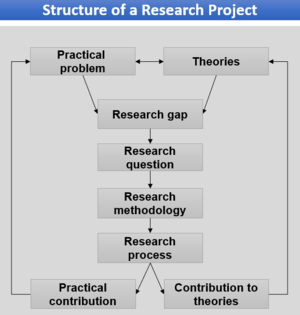Template:Describe Research Gap
Describe Research Gap
Description
Identifying a research gap through
Gap-spotting
go through existing literature on your phenomenon What are we missing? Problematization: dialectical interrogation familiar position, other stances, and the specific domain
Types of research gaps
Methodological conflict: Questioning if findings on a certain topic are inconclusive with regard to applied research methods. Contradictory evidence: Synthesize key findings and determine contradictions. Knowledge void: Analyze literature with regard to theoretical concepts (e.g., using the chart method) and look for specific gaps or under-researched areas of research. Action-knowledge conflict: Collect information about the action and relate this information to the knowledge base. Evaluation void: Analyze if research findings have been evaluated and empirically verified. Theory application void: Analyze the theories that have been employed to explain certain phenomena and identify further theories that might contribute to the knowledge base as well.
Examples
Further Readings
[1] Sandberg, J. & Alvesson, M. (2011). “Ways of constructing research questions: gap-spotting or problematization?”, Organization: Vol. 18, no. 1, pp. 23-44.
[2] Müller-Bloch, C. & Kranz, J. (2015). “A Framework for Rigorously Identifying Research Gaps in Qualitative Literature Reviews”, International Conference on Information Systems (ICIS): Forth Worth, Texas, USA.
